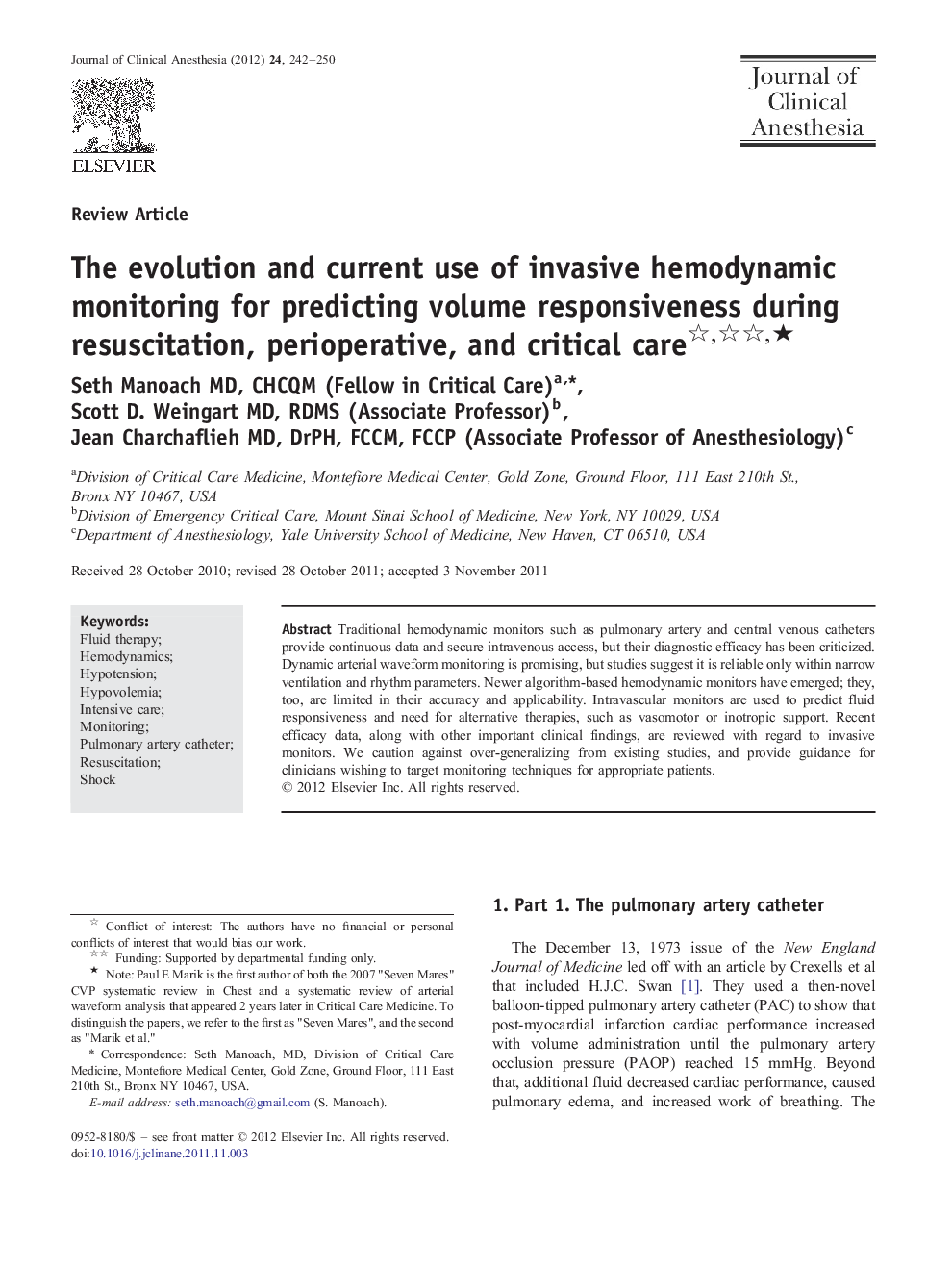| Article ID | Journal | Published Year | Pages | File Type |
|---|---|---|---|---|
| 2763213 | Journal of Clinical Anesthesia | 2012 | 9 Pages |
Traditional hemodynamic monitors such as pulmonary artery and central venous catheters provide continuous data and secure intravenous access, but their diagnostic efficacy has been criticized. Dynamic arterial waveform monitoring is promising, but studies suggest it is reliable only within narrow ventilation and rhythm parameters. Newer algorithm-based hemodynamic monitors have emerged; they, too, are limited in their accuracy and applicability. Intravascular monitors are used to predict fluid responsiveness and need for alternative therapies, such as vasomotor or inotropic support. Recent efficacy data, along with other important clinical findings, are reviewed with regard to invasive monitors. We caution against over-generalizing from existing studies, and provide guidance for clinicians wishing to target monitoring techniques for appropriate patients.
